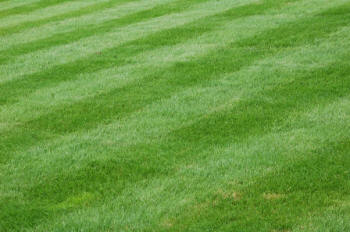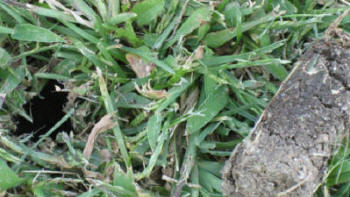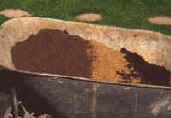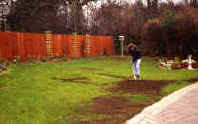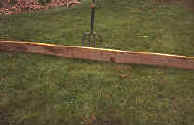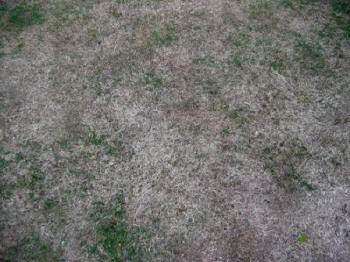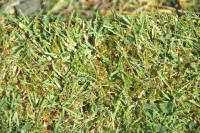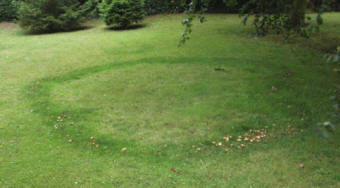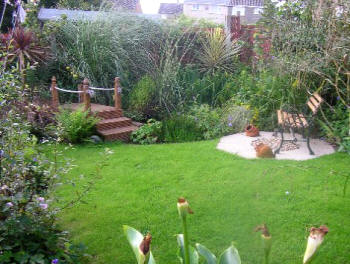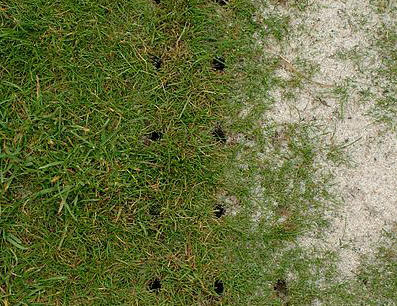
Gaeumannomyces graminis var. avenae
Gaeumannomyces graminis var. avenae is the botanical or scientific name of All Patch Disease - Ophiobolus. It is not a common
disease in the UK, but sometimes occurs with catastrophic results on
golf green. Such areas necessarily include the 'Browntop' bents
(Agrostis spp) in their grass mix.
It is rarely of ever, found in turf
areas of a low soil ph level. Geographically, this means that areas of
high ph soil levels will be more likely to be troubled with the disease.
A natural parasitic fungi - Phialophora radicicola - is widespread in the UK, and where it is present, there is rarely any problem with Ophiobolus - Take All Patch. It is effective enough for it to be widely used by way of soil injection in other parts
of the world where the Ophiobolus Patch is troublesome. In terms of preventative methods, the use of wide spectrum fungicides should be
restricted so as to keep the population of Phialophora radiciola
in the turf area. Where the parasitic fungi is present, there will be no
Take All Patch disease.
Preventative treatment is basically normal lawn maintenance, with a good feeding regime and aeration. Where there is possibility of of the disease -
high Agrostis spp turf, then consider the use of Sulphate of Ammonia as main Nitrogenous feed. This will have an acidifying affect upon the soil. If there
are small patches in the early stage of infection, then the areas can be spiked,
fed and new turf installed. The dead grasses within the circular brown patch
will not recover.
If you feel that you may have over-limed your soil, then do a soil test, and then rectify the alkaline content (PH level, with the use of a soil acidifier). Rhododendron feed/treatment may do the trick. Likewise, alter your feeding regime to include Ammonium Sulphate as the main source of Nitrogen fertiliser.
There is no point trying to 'cure' it after appearance. Simply dig up
the dead area and re-seed or re-turf.
Above all, it should be stressed that this is a disease only of
Agrostis - Bents - Browntop grasses so is not likely to be the first
suspected cause if you have brown
patches on your lawn.

